ISSN ONLINE(2319-8753)PRINT(2347-6710)
ISSN ONLINE(2319-8753)PRINT(2347-6710)
Prof S.Parthasarathy1, E.Jeyasri 2
|
| Related article at Pubmed, Scholar Google |
Visit for more related articles at International Journal of Innovative Research in Science, Engineering and Technology
In electric power systems due to the integration of power electronic devices, the power quality issues has been raised and has led to waveform distortion. As a consequence of Harmonics the strange condition at various electrical equipment that are connected to the power systems has been created. As a result of this, current Total Harmonic Distortion (THDI) values violates its limit as mentioned in standard specified by IEEE 519- 1992.This paper deals with the conventional design of passive harmonic filter for Radial Distribution Systems (RDS).The test system is simulated in DIgSILENT 14.1.6 Powerfactory.The performance of the proposed filter is analyzed on IEEE 9 bus and IEEE 34 bus RDS. The investigations validate the effectiveness of the proposed passive harmonic filter.
Keywords |
| Power Quality, Total Harmonic Distortion, Passive Harmonic Filter. |
INTRODUCTION |
| A great number of nonlinear loads like adjustable speed drives and static power switches including those of higher capacity ground the power quality strife. The term power quality refers to a wide variety of electromagnetic phenomenon that characterizes voltage or current at a given time and at a given location on the power systems. The electric power engineers see power quality as anything that affect the voltage, current and frequency of power being supplied to the end user. The Power Quality is the combination of voltage quality and current quality [1].One of the major power quality issue that affects the end user is harmonics. The total and individual voltage harmonic distortions are limited to 5% and 3% respectively as per the guideline given by IEEE 519-1992 standard [2]. |
| These harmonics can be mitigated by adopting various mitigation techniques including passive and active Filtering techniques [3-4].Among these, passive filters are adopted often since it is easy to install and less cost. Various types of passive filters have been proposed to mitigate the harmonics along RDS[5].The passive filter parameters have been optimized using the Particle Swarm Optimization technique, by considering the power loss created by the filter [6].One of the problem occurring due to the incorporation of passive filters along a RDS is resonance. Hence the passive filter have been designed by considering the two resonant points at the point of common coupling with the help of DIgSILENT Power Factory[7].The adaptive Cultural Algorithm with hybrid mutation have been implemented in order to optimize the parameters of Asymmetry Passive Filters[8].An Optimized Passive filter for steel manufacturing plant have been planned by using the neural-genetic algorithm with fuzzy logic[9]The optimal location and sizing of the passive filter is designed with the objective of minimizing the harmonic voltage at all the busses using genetic algorithm tool box in MATLAB environment[10]. |
| The recent manifestation of Nonlinear Load (NLD) in the Electric Power System aggravated harmonic distortion in the network voltages. This fact and the increasing number of applications with NLD have led us to analyze the harmonic problem in Radial Distribution System. The procedures used for analyzing the harmonic problem can be classified into two categories. They are time domain and frequency domain approach. In the proposed work the RDS is polluted by the inclusion of nonlinear device. The maximum polluted bus due to harmonic penetration is identified based on Total Harmonic distortion value and passive harmonic filter is placed at the scrupulous location to suppress the harmonics. The generated harmonic spectrum using DIgSILENT Power factory helps to design the passive harmonic filter for RDS. The proposed passive harmonic filter is tested on RDS and the result of Total Harmonic Distortion values at each bus is compared with and without the placement of filter. |
PASSIVE HARMONIC FILTER |
| A. Theoretica l Background |
| Passive filters are in combination of inductance, capacitance and resistance elements configured and tuned to reduce the impact of harmonics in the power systems. They are employed either to shunt the harmonic currents off the line or to block their flow between parts of the system. The two basic types of passive filters are single tuned and double tuned filters. Single tuned filters are series tuned to present low impedance to particular harmonic currents and is connected in shunt with the system as shown in Fig.1.The double tuned filter performs the same function as two single tuned filters and the losses are much lower in this configuration. |
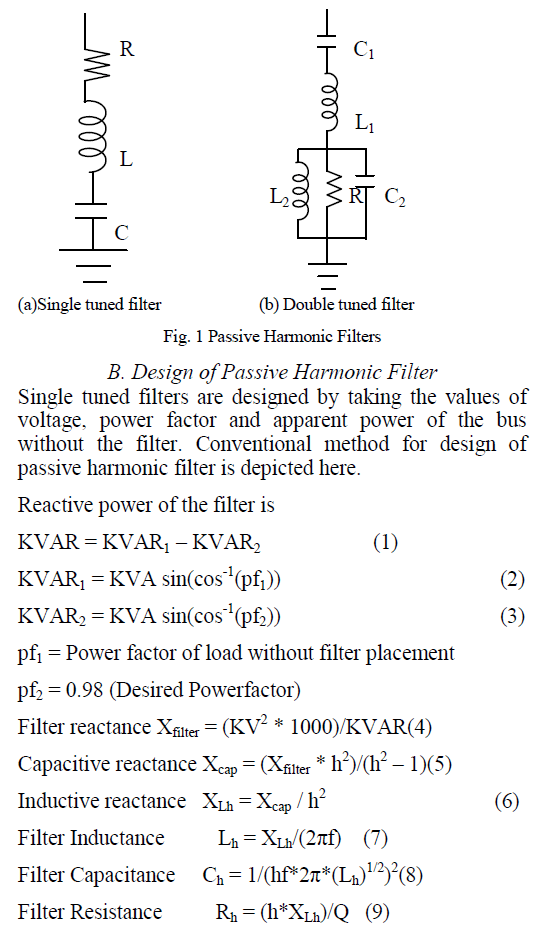 ' ' |
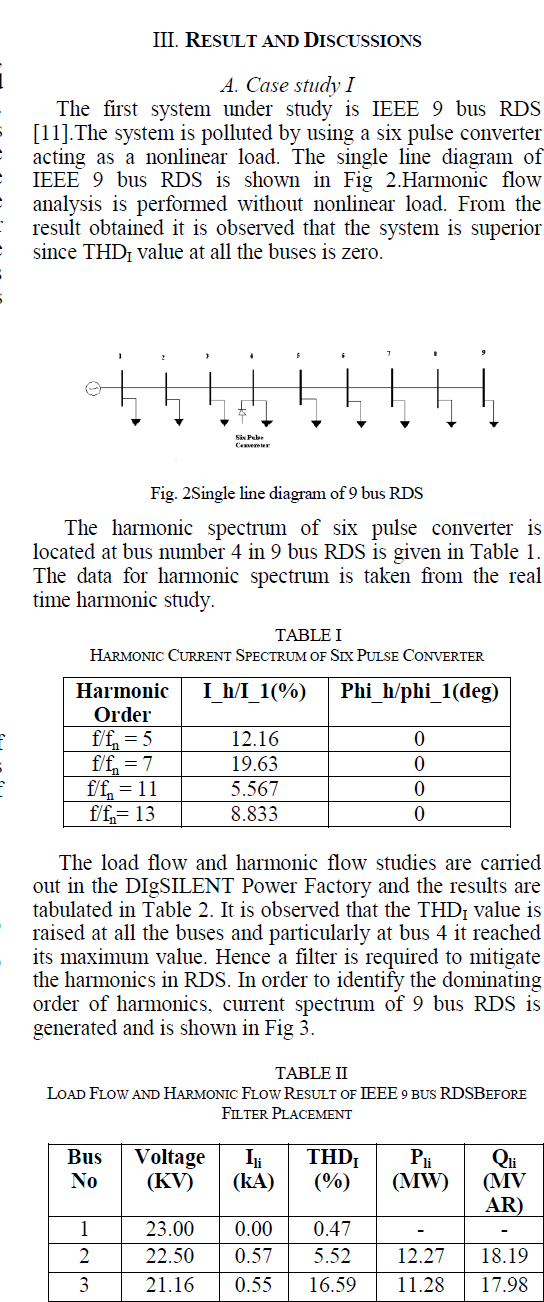 |
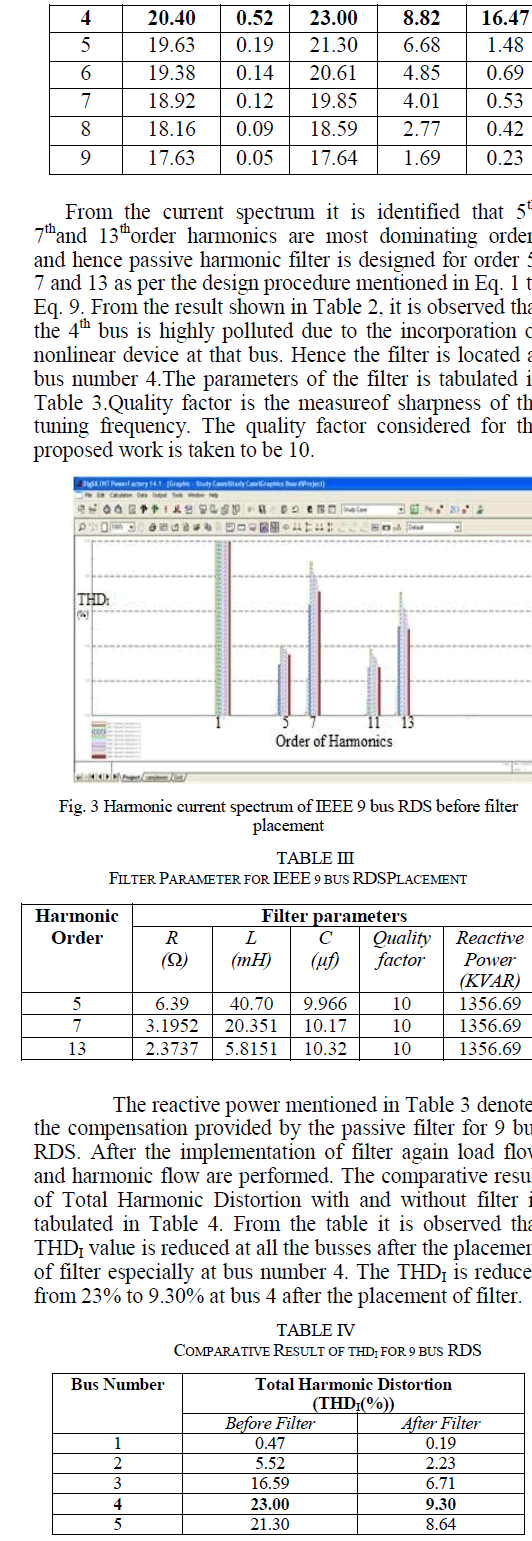 \ \ |
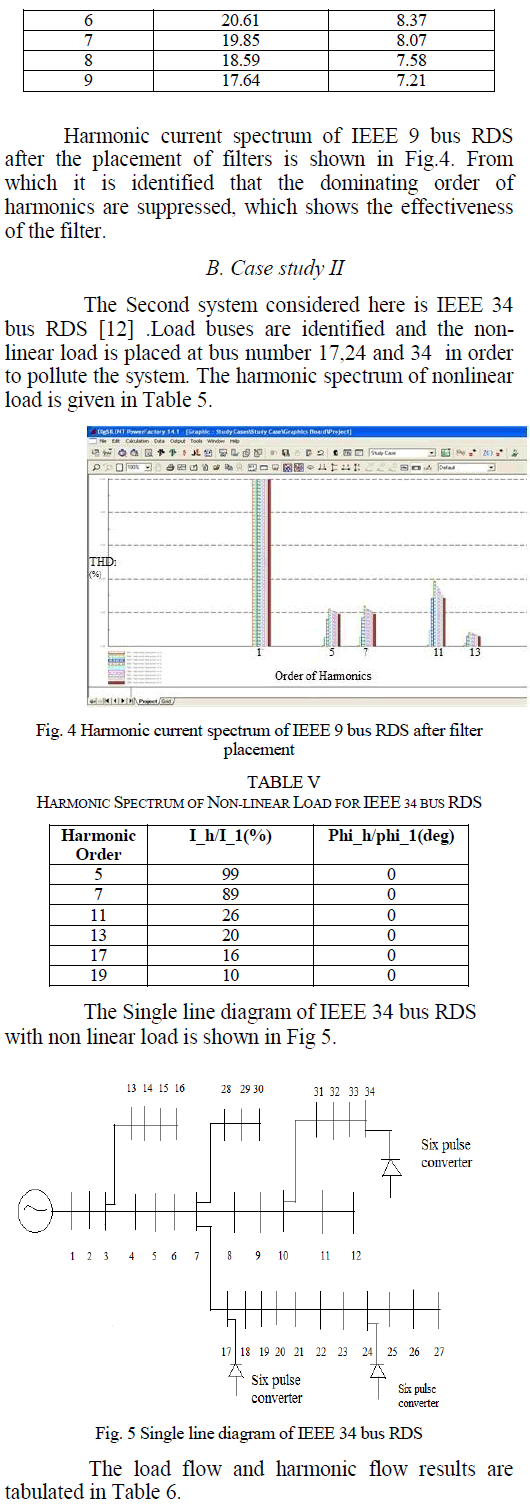 |
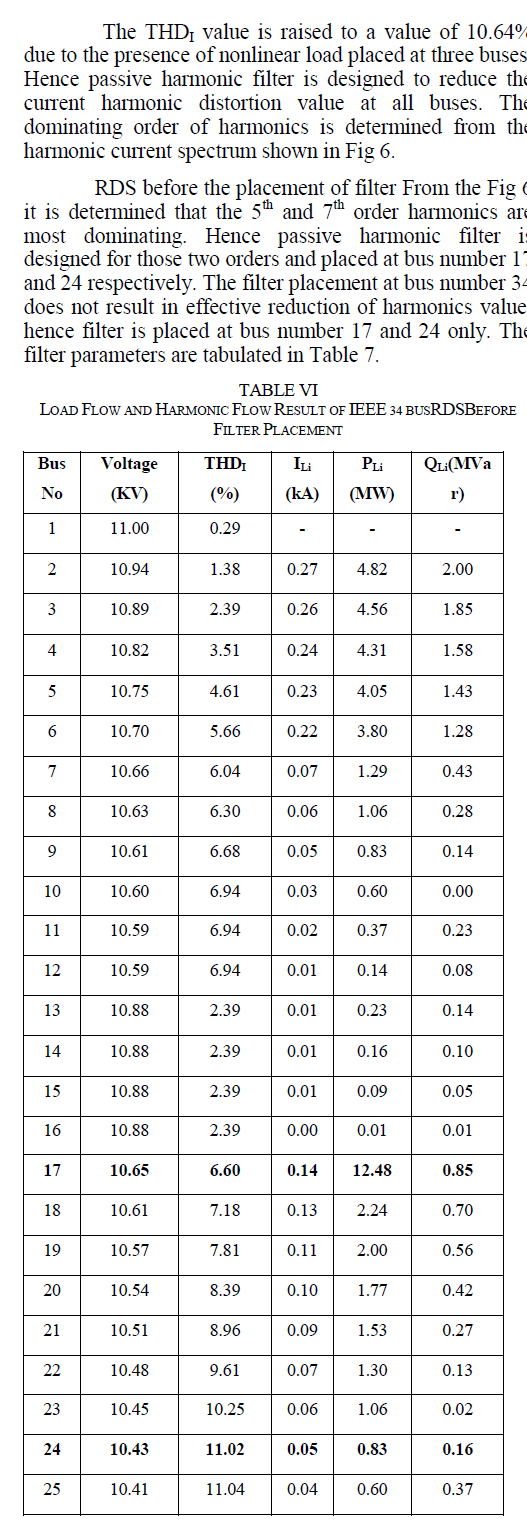 |
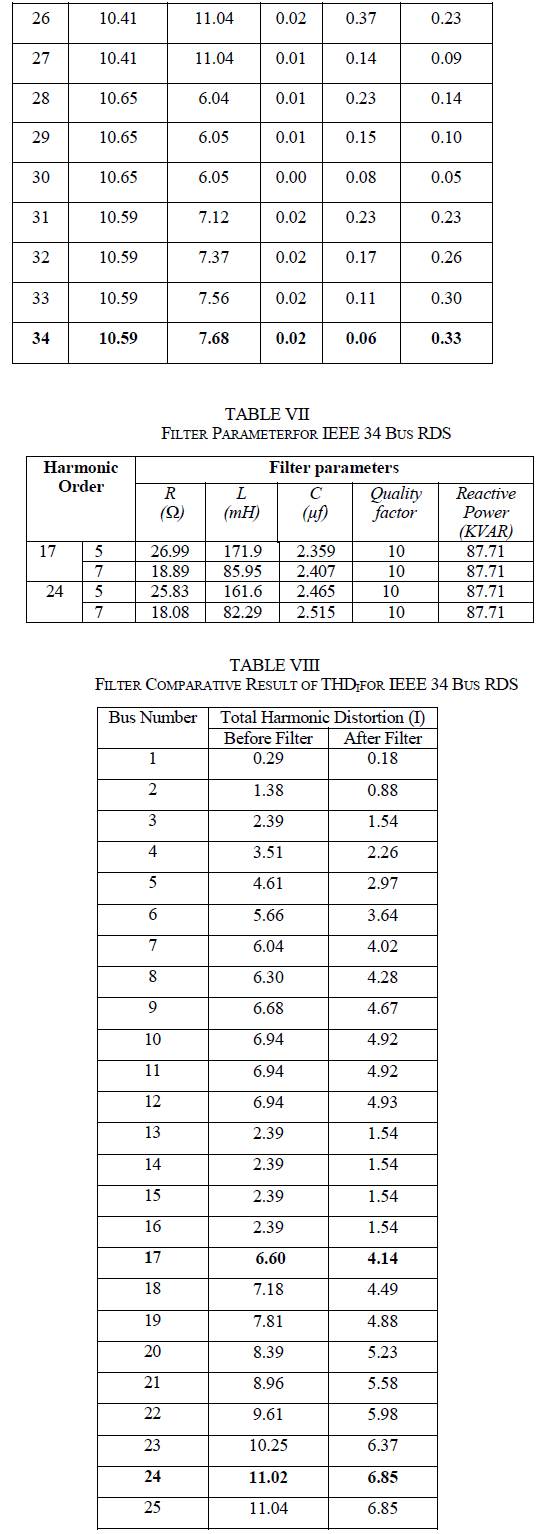 |
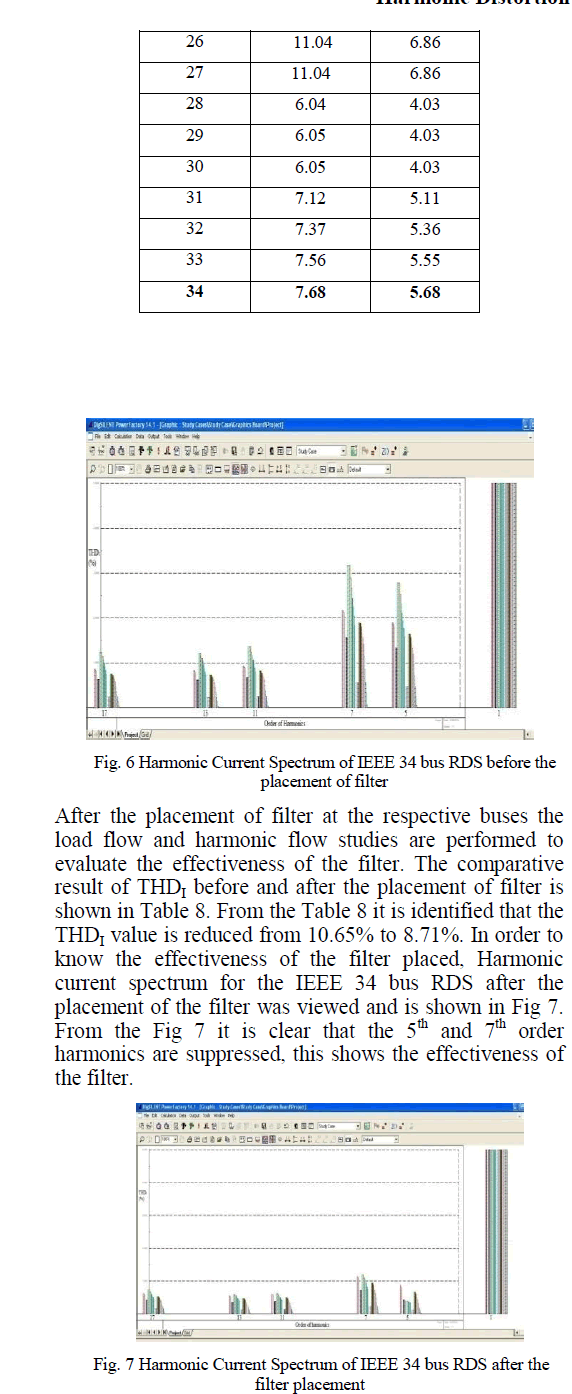 |
CONCLUSIONS |
| The proposed work deals with analyzing of the load flow and harmonic flow of IEEE 9 bus and IEEE 34 bus RDS with and without inclusion of harmonic sources. The passive harmonic filters are designed and implemented for IEEE 9 bus and IEEE 34 bus RDS. The THDI was measured and it was obvious that the THDI is under the limit specified by IEEE standard 519 – 1992 after the placement of filter. This validates that the designed harmonic filter is efficient to mitigate harmonics in RDS. |
References |
|